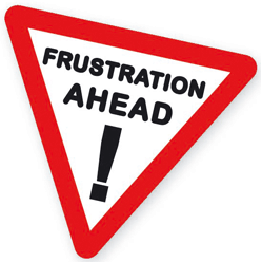“To the average person, if you have to go to a funeral, you’re better off in the casket than doing the eulogy.”
—Jerry Seinfeld
As Jerry Seinfeld has pointed out, according to the roster of common phobias, most people at a funeral would rather exchange places with the guest of honor than present a eulogy. A quick Google search suggests that public speaking is in the top three fears on over a dozen lists of “top fears” we have…and all scare us more than death itself! If you’re familiar with shaking knees and a trembling voice when giving a speech, or just refuse to speak publicly altogether, you’ll want to keep reading, because there is a way to get rid of this fear permanently.
Why do we fear speaking in public? Some researchers posit that this fear is hardwired, genetically inherited from our ancestors. In the past, when man was threatened by large and hungry predators, living as a group was a basic survival skill. Separation of any kind could mean death. According to the researchers, this may have evolved into the fear of public speaking because the situation of standing alone in front of a room full of people embodies that feeling of separation. On a Knower/Judger level, people are afraid their audience will reject them.
Others see this fear as learned through conditioning. Did your parents fear public speaking? Perhaps they did not like to stand out from the crowd and you picked that up?
In general, about 10% of the population adore standing up in front of an audience and making their point, pontificating on a subject, or rallying people to a cause. On the other end of the spectrum, about 10% of the population become catatonic at the thought of presenting to more than one person. The rest fall along the continuum between the two extremes.
Yet, at some time in our lives most of us are called upon to step up and speak our piece. Perhaps we’re on a committee or a team of parents at PTA. Maybe our department head has chosen us to present a paper at the next national symposium (t-e-r-r-o-r!), or give a quick update to some collaborative teams in the company.
Whatever the task, if it involves speaking publicly to more than one person, most of us find it challenging.
If this only hits you infrequently and you can live with the fear and shaking knees, then you’re probably not looking for a solution. However, if you’ve always thought you could have done better, then I have a suggestion:
Strong communication skills enable employees to not only become better public speakers, but also better listeners who can be relied upon to give valuable comments and recommendations. Employees should always be prepared to present their ideas with their boss, board member or colleague. Public speaking groups provide a supportive environment for learning communication skills that are increasingly valuable in the workplace.
Public speaking is not only about being able to deliver an effective presentation to a group. Employees can apply its principles to many different situations in the workplace. Utilizing these techniques can help you improve your communication, influencing and advocating skills to help you progress in your career.
—Gary Schmidt, past president of Toastmasters International
I’ve been a member of two Toastmasters clubs in the St. Louis area—one launched my Toastmasters path, and the other I founded back in 2004. There are about 70 Toastmasters clubs in the greater St. Louis area, so finding one should not be a barrier.
Members meet in clubs, libraries, company lunchrooms, churches, YMCAs—just about anywhere. And they all have different schedules. Some meet for coffee, some for lunch, some in the evening. Some meet every week, some once a month. My point is, if getting comfortable with presenting has value to you, you can find a club that fits your situation.
Here’s what happens at a Toastmasters meeting. They’re about an hour long and are guided by solid educational principles. People give prepared speeches (usually five to seven minutes in length) and there are some fun “table topics,” where participants get one to two minutes to answer a question “off the cuff.” Sometimes the questions are serious, meaningful queries, and sometimes they are absolutely whimsical. My favorite:
- Boxers or briefs?
- Depends.
See? It can be fun!
During each meeting, there is a period where fellow Toastmasters “critique” the speeches, giving positive feedback and suggesting improvements. I know…we don’t like criticism. But how else are we going to learn?
I’ve watched countless young professionals, finance newbies, lawyers, engineers, insurance beginners, etc. come through the program. By the time they finish their first manual (with a set of 10 guided speeches—takes about a year), their skills and confidence have grown so much they don’t have a shred of fear left.
Want to get rid of your fear so you can shine when called on to speak in front of a group? Contact me and I’ll hook you up with a club.
Kim DeMotte, DTM.





